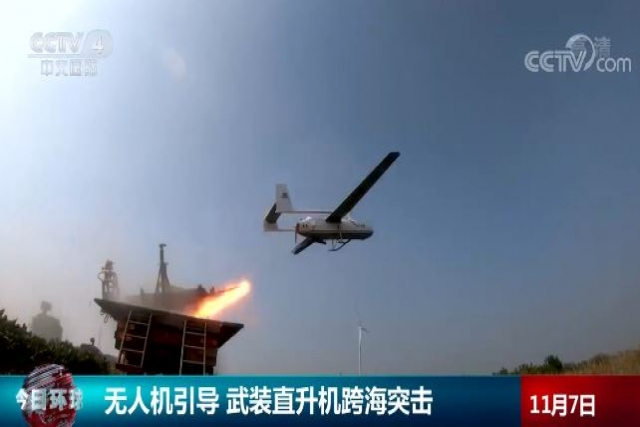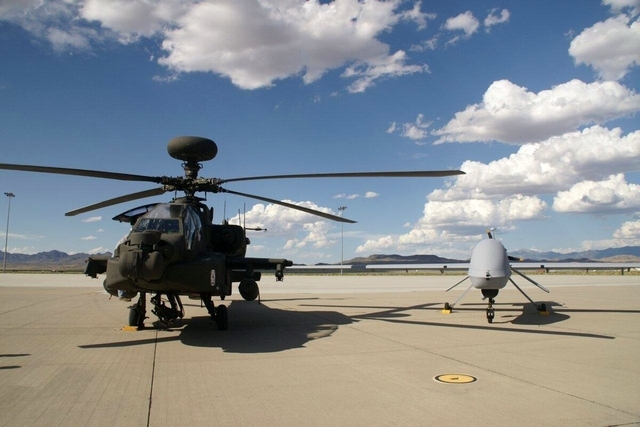Chinese Army Uses Drones to Guide Helicopter Missile Strike

The Chinese Army used a drone to guide a helicopter to conduct beyond visual range (BVR) strike at sea during a live-fire drill held recently.
All targets were accurately hit under the harsh conditions of dense fog, the military announced Wednesday.
In the past, the helicopter pilots had to identify the target through visual search when carrying out missile attacks. "Drone search and guidance can not only reduce the impact of bad weather, but also expand the firing range," the brigade’s commanding officer introduced.
Unmanned reconnaissance aircraft are featured with advantages of high flight height, long flight endurance, and multiple reconnaissance guidance methods. Since the beginning of this year, this brigade explored to hand over the search and guidance tasks initially undertaken by helicopters to the unmanned reconnaissance aircraft. With the drones’ assistance, the helicopter pilots just need to press the launch button, and the missile would accurately attack the target under the drone's guidance.
The biggest challenge here is the communication coordination and data sharing. So the brigade sought the assistance of technicians from the drone manufacturer to realize the "point-to-point" communication between the helicopter and the drone.

Simultaneously, tactical innovation also places higher requirements on the cooperation between helicopter pilots and drone controllers. Both parties have intensified training in the collaborative methods and skills. Although the live-fire drill encountered dense fog, the helicopter and drone successfully completed the training mission with the cooperation of the pilots and controllers.
In addition, this training exercise also increased the difficulty of the final assessment. It randomly deployed targets and set up air defense firepower nets to intercept, trying to be closer to actual combat. In the face of the complex environment, the helicopter, under the coordinated guidance of a drone, made within-visual range strike and beyond-visual-range strike flexibly, avoided enemy’s air defense fire strikes successively and destroyed targets efficiently.
The Manned-Unmanned Teaming (MUM-T) capability is observed even in Boeing AH-64 Apache gunships. It allows n Apache pilot to control the operations and receive video feed of a nearby drone. First fielded in 2009, it consists of the Apache A-64D/E as the manned system, the MQ-1C Gray Eagle or RQ-7B Shadow as the unmanned aircraft system (UAS), the One System Remote Video Terminal (OSRVT), which transmits video and data, and the One System Ground Control Station (OSGCS) which allows soldiers to control UASs from the ground.










